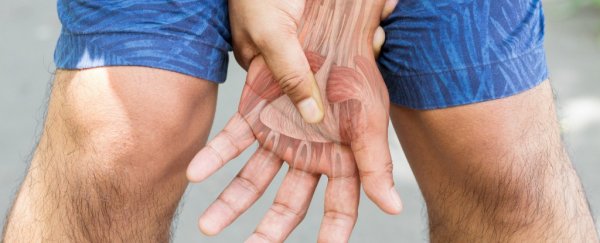Hold your hand in front of you, palm up and fingers splayed. Now bend your fingers at their first joint past the knuckles.
Your hand should look a bit like a spider on its back, curling up its legs - that's your proximal interphalangeal joints (PIJs) bending.
Let your hand splay out again. This time, curl just your pointer finger and let it uncurl. Now do your ring finger.
What do you think is going on here? If you had to guess, where would you say the muscle involved is?
Having never taken a medical anatomy course, I'd always assumed it was located entirely in the finger itself, just like the main muscles for flexing your elbow live in your upper arm.
Turns out, this intuition is wrong.
The main muscle for flexing your PIJs actually runs all the way up your arm. Called the flexor digitorum superficialis, it bends your fingers by contracting and bending them back toward itself.
This video (of unknown origin) which we saw Tweeted by the account How Things Work, illustrates the effect using a cadaver limb:
I can't stop staring at it.
This article was originally published by Business Insider.
